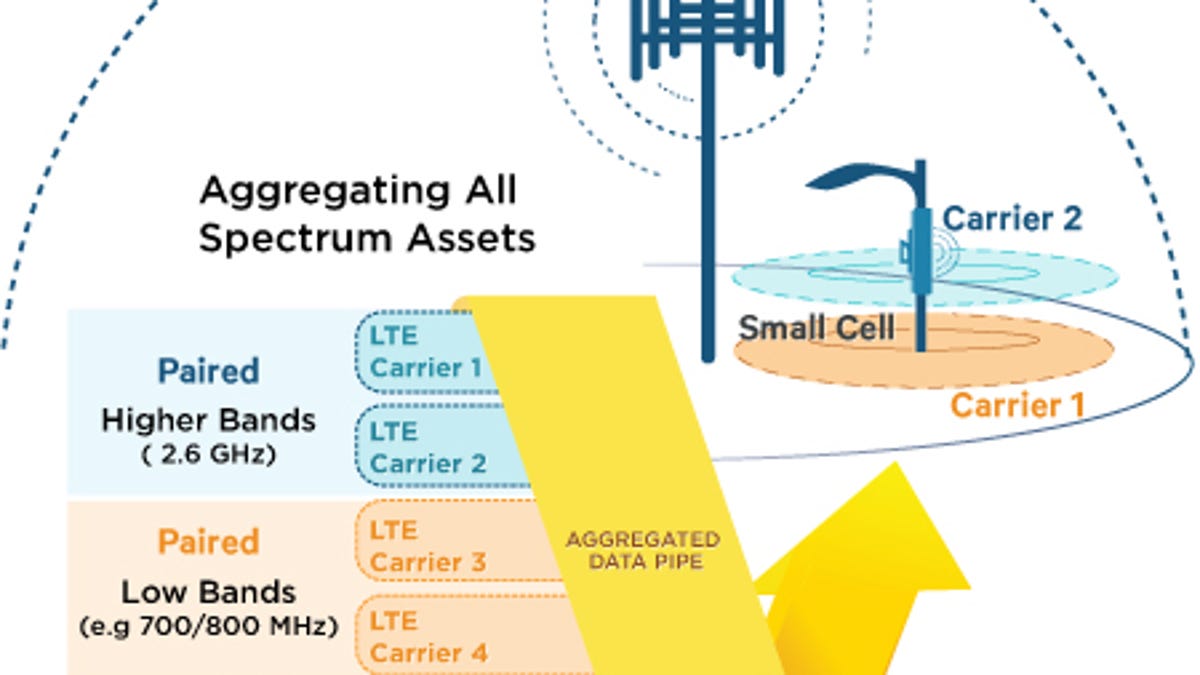Ericsson to show off 450Mbps LTE mobile networking
The telco company will demonstrate how a phone can simultaneously communicate over three network conduits for higher data-transfer rates.

Telecommunications equipment maker Ericsson will show a new variety of LTE mobile networking next week that can reach data rates of 450 megabits per second.
The demonstration, at the Mobile World Congress show in Barcelona, uses a technology called carrier aggregation, which broadly speaking combines signals from multiple base stations and multiple radio frequency bands.
Carrier aggregation is used in the current LTE (Long-Term Evolution) Advanced standard for 4G networks, which generally don't surpass 100Mbps and rarely even come close, but Ericsson goes farther by connecting a single device to three separate carriers, the company said Thursday. It'll also be showing the use of 3.5GHz radio spectrum -- higher than what most phones use today -- as part of its carrier aggregation technology.
The three-carrier technology isn't ready for use yet, but the company said a two-carrier version that can reach 300Mbps is. It'll be showing that at Mobile World Congress, too.
Companies like Ericsson and Alcatel-Lucent have steadily expanded the abilities of wireless networks -- indeed, the company plans to "give a glimpse" of fifth-generation (5G) networks.
Even with smartphone usage rapidly maxing out networks, though, it can be hard to convince mobile network operators like AT&T or Vodafone to invest in all that equipment and its installation. That's why LTE, for all its appeal, has yet to spread to many parts of the US and is just getting a foothold in Europe.
That's one reason it's interesting that Ericsson last week announced it's moving into operating some of that infrastructure itself, offering it to network operators through a "small cell as a service" plan. Small cells don't reach nearly as many customers as current mobile phone cell towers, but they can be installed in areas where congestion is more of a problem.

